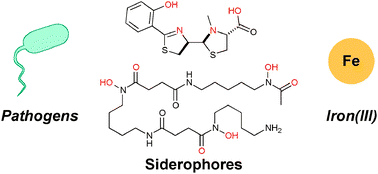Siderophore-based detection of Fe(iii) and microbial pathogens†
Abstract

- This article is part of the themed collection: Metallomics Emerging Investigators
* Corresponding authors
a
Department of Chemistry, Massachusetts Institute of Technology, Cambridge
E-mail:
lnolan@mit.edu
Fax: 617-324-0505
Tel: 617-452-2495

 Please wait while we load your content...
Something went wrong. Try again?
Please wait while we load your content...
Something went wrong. Try again?
 Fetching data from CrossRef.
Fetching data from CrossRef.
This may take some time to load.
Loading related content
